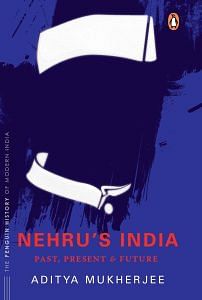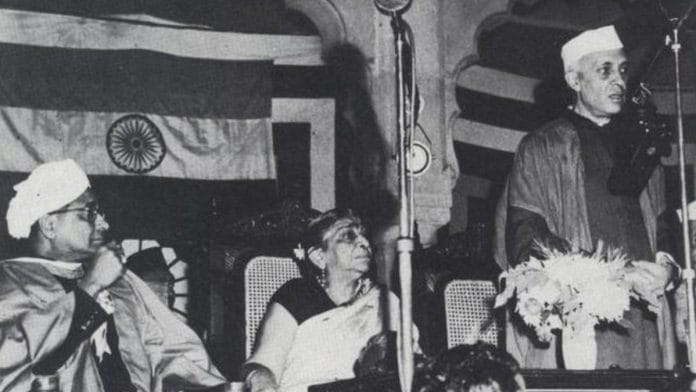Nehru’s focus on the need to develop a ‘scientific temper’, a term he coined in his
Discovery of India, which the Constitution of India reiterated in article 51A, laying down the fundamental duties of every citizen of India, is being made a mockery of today. Nehru said:
‘The scientific temper points out the way along which man should travel . . . It is the scientific approach, the adventurous and yet critical temper of science, the search for truth and new knowledge, the refusal to accept anything without testing and trial, the capacity to change previous conclusions in the face of evidence, the reliance on the observed fact and not pre-conceived theory, the hard discipline of the mind—all this is necessary, not merely for the application of science but for life itself and the solution of its many problems.’
Nehru tried to imbibe this spirit in his thinking and action throughout his life.
What a contrast today! The Guardian quoted the current prime minister mixing up mythology about gods and goddesses with history and science, while inaugurating a new modern hospital in Mumbai:
‘We can feel proud of what our country achieved in medical science at one point of time,’ the prime minister told a gathering of doctors and other professionals at a hospital in Mumbai . . . ‘We all read about Karna in the Mahabharata. If we think a little more, we realise that the Mahabharata says Karna was not born from his mother’s womb.
This means that genetic science was present at that time. That is why Karna could be born outside his mother’s womb . . . We worship Lord Ganesha. There must have been some plastic surgeon at that time who got an elephant’s head on the body of a human being and began the practice of plastic surgery.’
Also read: ‘Don’t call it god particle’—physicist Ashutosh Kotwal keeps science & spirituality separate
The Hindustan Times reported that the governor of Bengal, committing violence on both science and history, said, while addressing a science and engineering fair in Kolkata that the ‘mythological character Arjuna’s arrows had nuclear power and chariots mentioned in the Mahabharata actually flew.’ He has since been promoted to the post of the vice president of India.
The erstwhile RSS chief (sarsangchalak) K.S. Sudarshan, an engineer by training, reportedly talked about how sage Bharadwaja and Raja Bhoj, in times gone by, not only ‘described the construction of aeroplanes’ but discussed ‘details like what types of aeroplanes would fly at what height, what kind of problems they might encounter, how to overcome those problems, etc.’
No wonder that the corona virus was being fought with gobar (cow dung), gomutra (cow urine), thali (metal plate) banging, tali (clapping), shining mobile phone torches, Ganga-snan (dip in the Ganges) and unverified medicines made by a much-favoured yogi! The Supreme Court had to intervene to call a halt to such false claims made by the yogi.
In sum, it is as if the political leaders have reversed their roles. From that of pulling up society and bringing it in line with the highest global civilizational values, a role performed by the leaders of the Indian national movement like Gandhiji and Nehru, to that of pushing society back by appealing to sectarian identities, acquisitive instincts and traditional prejudices.
The hegemonic ‘Idea of India’, the ‘common sense’ of the Indian people, created by the Indian national movement, is severely challenged today. That challenge is not coming from a ‘backward’, ‘traditional’ people but from their leaders and the state machinery.
Nehru’s fantastic effort to raise India from what Tagore called the ‘mud and filth’ left behind by the British has now been replaced with the Indian people being pushed back into that same ‘mud and filth’ of ignorance, obscurantism, disempowerment, unfreedom and, above all, communal hatred.

This excerpt from ‘Nehru’s India: Past, Present & Future’ by Aditya Mukherjee has been published with permission from Penguin Random House India.






